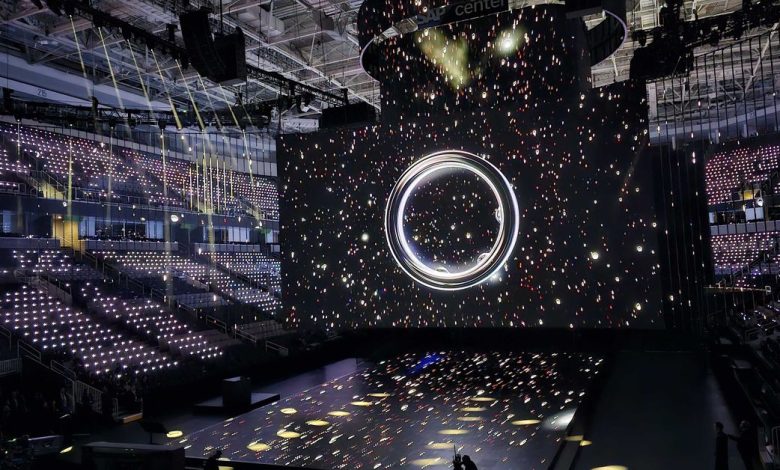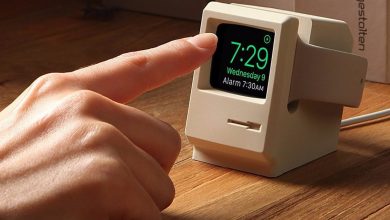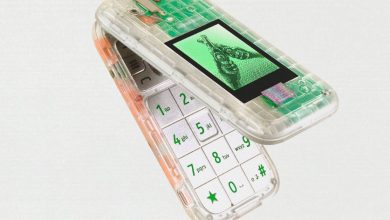Samsung’s smart ring might signal the start of a new wearable era

[ad_1]
Smartwatches have long reigned supreme in the wearable world. Smart rings have hovered around the periphery, but earlier this week, Samsung ended its Unpacked event with a tease of the Galaxy Ring. To me, that reads like the company is itching to shake up the wearable world order.
That might sound hyperbolic given that all Samsung did was play a flashy reel of a sparkly ring with a few visible sensors on the inside of the band. Few details were given onstage. But in an email, Samsung spokesperson Amber Reaver told me that the ring is meant to “empower more people to manage their health with a comprehensive yet simplified approach to everyday wellness at home.” Part of that is having consistent and accurate tracking data over a lengthy period of time — hence, the smaller form factor. Reaver also noted that the ring will have “leading sensor technologies” and that it would be comfortable enough for 24/7 wear. Some folks at Unpacked also got to see a prototype, with analyst Avi Greengart noting that it’s light, comes in three finishes and in sizes up to 13, and will be available later this year.
It sounds an awful lot like the Oura Ring — and Oura knows it. Not long after the Galaxy Ring was announced, Oura CEO Tom Hale sent this unprompted statement to The Verge:
With new features released regularly, Oura has the strongest IP portfolio — in both hardware and software — for the smart ring form factor, with 100 granted patents, 270 pending patent applications, and 130+ registered trademarks. New players entering the space is validation for the category and drives us to aim higher to serve our members and community.
Hale’s right. Competition is a form of validation — and there are a ton of new players that Oura will soon have to contend with. Last week at CES, I argued 2024 would be the year of the smart ring because I saw more of them on the show floor than I have in years. However, it’s easy to brush aside a horde of smaller companies glomming onto a trend. It’s another for a tech heavyweight like Samsung to say that it, too, believes there’s something to this form factor.
If you mull it over, it’s easy to see why. Smart rings are more discreet and much better suited to sleep tracking than smartwatches. (Samsung has also spent the last two years beefing up its sleep tracking features.) The underside of your finger is also a more accurate place for tracking blood oxygen and heart rate than your wrist. And as smartwatches grow ever-more popular, I’ve heard from plenty of readers yearning for simpler trackers that don’t act as extensions of their phones. Given the chokehold Apple has on the smartwatch market, it’s savvy for Samsung to try to own a newer form factor with only one major, but still relatively niche, player.
Because there are few details, it’s hard to say how Samsung thinks of the Galaxy Ring within its larger wearable portfolio. That said, I can see it becoming an accessory for the Galaxy Watch. For example, the Amazfit Helio is a smart ring that can act either as a standalone tracker or something that can pair with its existing smartwatches. The pitch is that when it’s time to sleep, you can stick your smartwatch onto the charger with no worries about missing out on sleep tracking. That’s a natural fit for Samsung, too, especially since it could easily create a discounted wearable bundle. (It worked well enough for Google when it threw in a Pixel Watch with Pixel phones.)
This is also one area where Oura would have a much harder time competing. While the Oura Ring works with other smartwatches, you need a third app like Apple Health or Google Health to bring the data from each device together. It means having multiple apps cluttering your phone. You may not love being locked into an ecosystem, but the convenience of having a Galaxy phone, a Galaxy Watch, and a Galaxy Ring is the ability to view everything from the Samsung Health app.
You can bet that other major companies will follow if Samsung is successful. And if that’s the case, the way we view smart rings may ultimately shift from standalone devices to something that’s more of an accessory for other gadgets. We’ll have to see how it all shakes out once the Galaxy Ring is available, reportedly later this year. But I, for one, am glad to see some movement in a segment that’s been coasting for far too long.
[ad_2]




